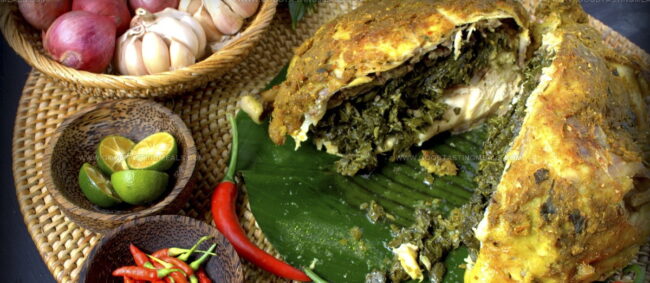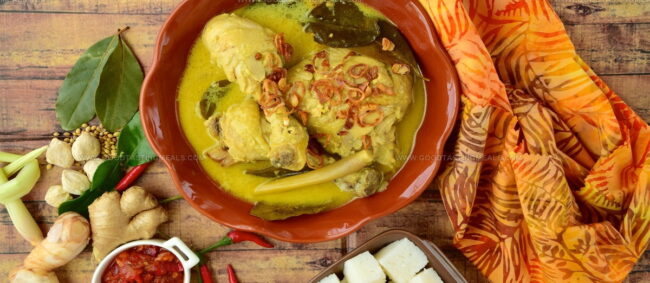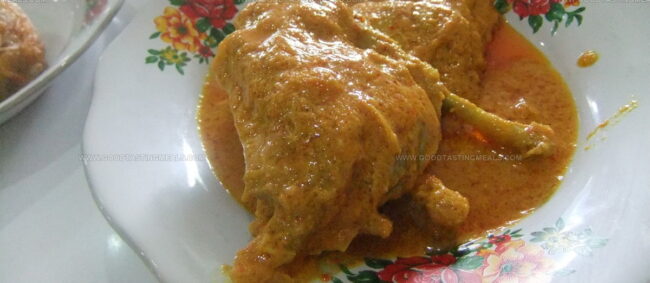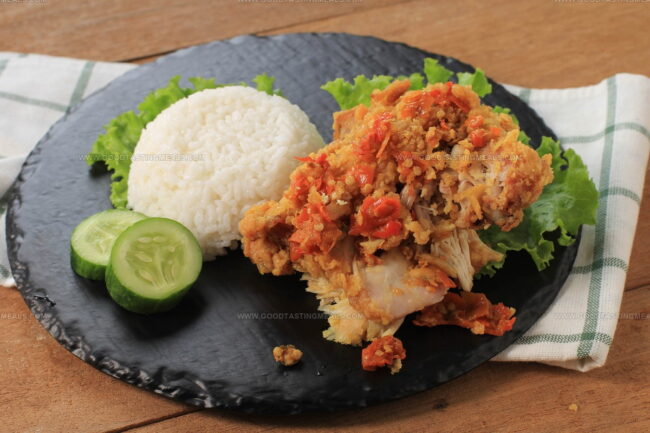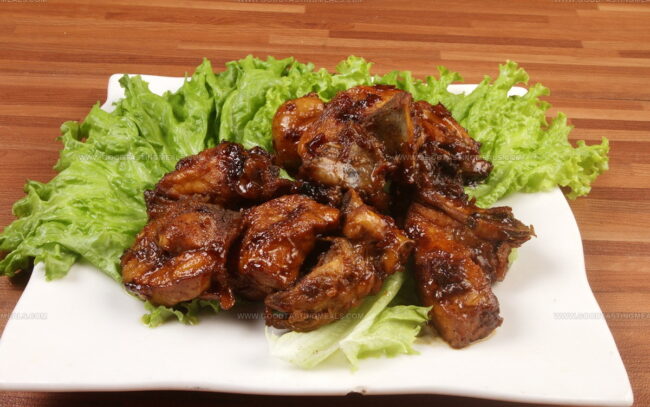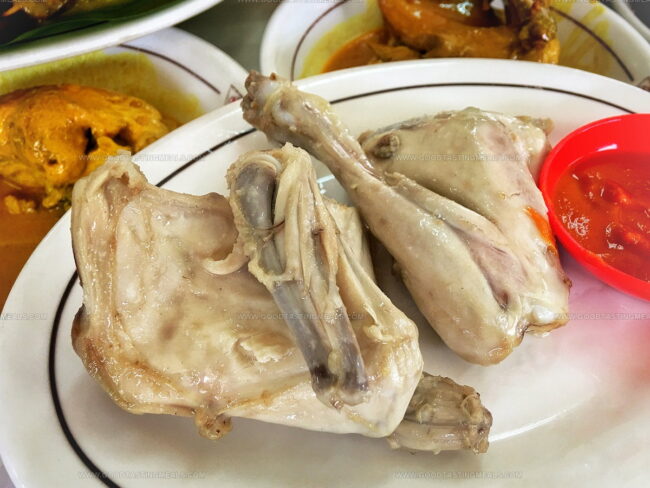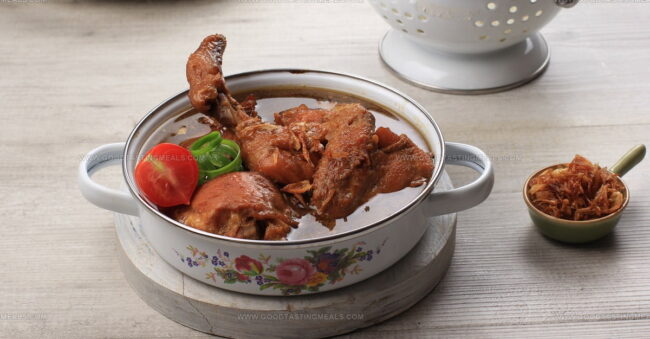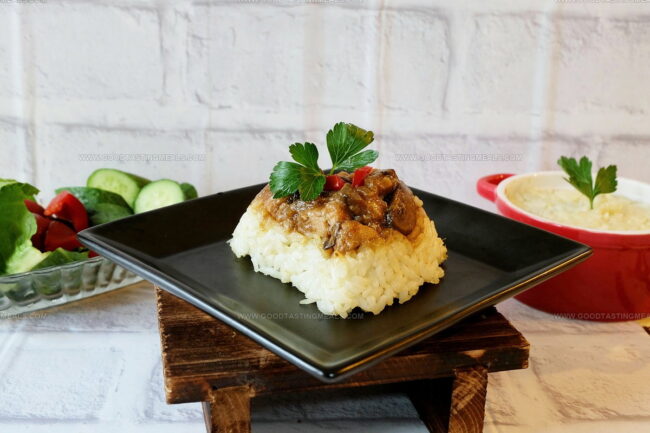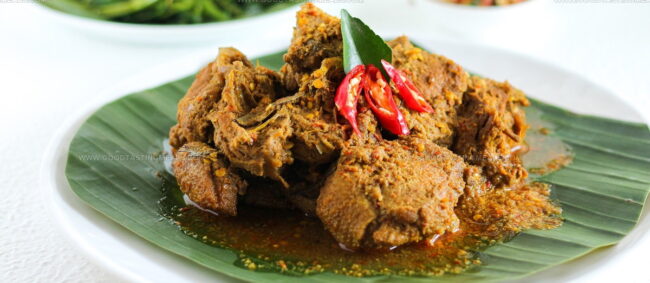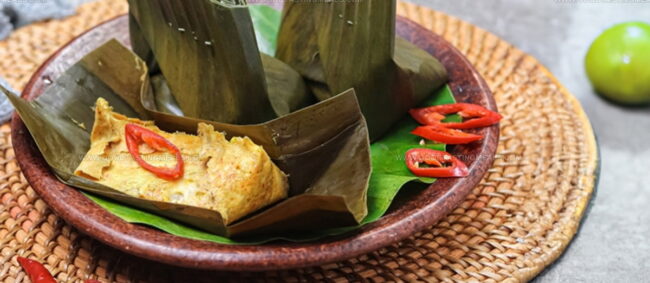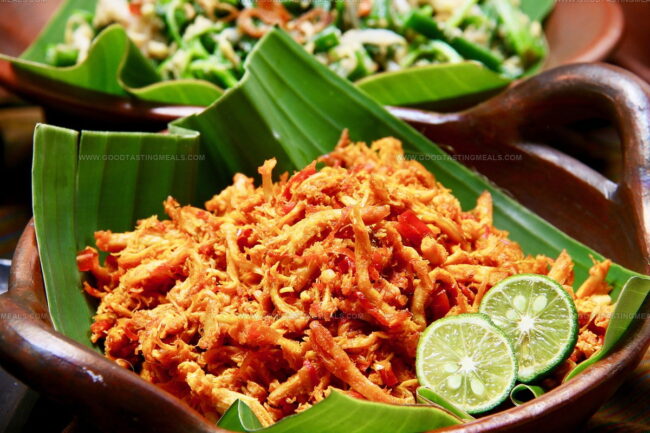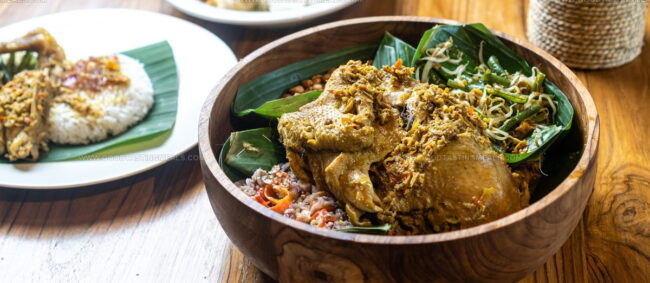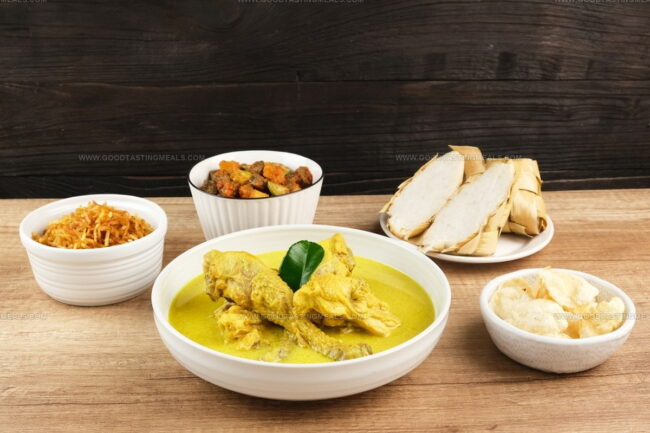20 Authentic Indonesian Poultry Dishes Worth Trying
Indonesian poultry dishes represent a vibrant culinary landscape bursting with complex flavors and regional diversity.
Centuries of cultural interactions have shaped these remarkable recipes into a tantalizing gastronomic experience.
Spices, aromatic herbs, and traditional cooking techniques transform ordinary chicken into extraordinary meals that captivate taste buds.
Local ingredients play a crucial role in creating unique and memorable flavor profiles across different Indonesian regions.
Each dish tells a story of heritage, community, and culinary creativity that reflects the nation's rich agricultural traditions.
Indonesian chefs masterfully blend sweet, savory, and spicy elements to craft poultry recipes that surprise and delight.
Regional variations showcase the incredible depth and complexity of Indonesian cooking methods and ingredient combinations.
These 20 signature Indonesian poultry dishes will transport you through a delicious culinary journey:
Signature Indonesian Poultry Dishes Bursting with Spice
The kitchens of Indonesia transform poultry with vibrant herbs and spices. Each dish is a flavorful journey across the archipelago.
Betutu
Bebek betutu represents a legendary Balinese ceremonial dish featuring duck slow-cooked with intense spice combinations.
Native Indonesians prepare this complex recipe by rubbing and stuffing whole duck with a powerful blend of turmeric, ginger, pepper, chili, and shrimp paste.
Steaming over hot coals creates an incredibly tender and flavorful result that transforms simple poultry into a remarkable culinary experience.
Balinese families typically reserve this special dish for significant ceremonies and celebrations.
Authentic preparation requires advance ordering and significant cooking time.
Restaurant versions now often use barbecue techniques instead of traditional methods.
Cooking time can extend several hours to ensure maximum meat tenderness and spice infusion.
Ayam Goreng
Ayam goreng represents Indonesia's crispy, spice-infused fried chicken that transforms humble poultry into a flavor-packed national culinary treasure.
Marinated with traditional spices like lemongrass, galangal, turmeric, and tamarind, the chicken is briefly braised before deep-frying to achieve a golden, crackling exterior.
Bone-in pieces like thighs and drumsticks absorb marinades most effectively, creating intensely seasoned meat.
Restaurants and street vendors serve this beloved dish alongside steamed rice and fresh vegetables.
Indonesian families prepare ayam goreng for everyday meals and special gatherings.
Diners relish the complex layers of aromatic spices and satisfying crunch in every bite.
Celebrated nationwide, ayam goreng embodies Indonesia's rich culinary diversity and sophisticated flavor profiles.
Nasi Goreng Ayam
Nasi goreng ayam represents Indonesia's signature spicy fried rice packed with intense flavors and aromatic ingredients.
Indonesian home cooks blend chicken thighs with fragrant spices like turmeric, garlic, and ginger to create this savory meal.
Rice gets stir-fried with soy sauce, fish sauce, and kecap manis, developing deep umami notes throughout the cooking process.
Shallots and scallions provide additional layers of complexity to the dish's taste profile.
Hot peppers deliver a spicy kick that distinguishes this version from other fried rice variations.
Fried eggs typically crown the rice, adding richness and visual appeal.
Crispy fried shallots sprinkled on top enhance texture and flavor complexity.
Prawn crackers served alongside complete this classic Indonesian comfort food experience.
Sate Ponorogo
Sate Ponorogo marks a signature Indonesian grilled chicken dish from East Java distinguished by its complex spice marinade and unique preparation method.
Indonesian street vendors carefully marinate chicken pieces with a fragrant blend of shallots, garlic, candlenuts, and traditional spices like coriander, turmeric, and cumin.
Galangal and palm sugar add depth to the marinade's rich flavor profile.
Skilled grill masters thread marinated chicken onto bamboo skewers with precision.
Sweet soy sauce and brown sugar create a caramelized glaze during grilling.
Hot coals transform the meat into tender, smoky morsels.
Each skewer delivers an explosion of Indonesian culinary tradition.
Regional spice combinations make this satay a true East Javanese delicacy.
Ayam Penyet
Ayam penyet are crispy Indonesian fried chicken pieces smashed with a pestle to tenderize meat before coating in fiery sambal chili paste.
Indonesian food experts trace this dish's origins to East Java, where traditional preparation involves forcefully pressing chicken to break down muscle fibers.
Restaurants and street vendors across Indonesia and Singapore serve the chicken with vibrant side accompaniments like fresh vegetables, steamed rice, tempeh, and tofu.
Sambal's intense heat defines the dish's signature flavor profile, transforming simple fried chicken into a spicy culinary experience.
Extra sambal sauce typically arrives alongside the main dish, allowing diners to control their preferred spice level.
Each serving promises a complex balance of crispy exterior and tender meat infused with chili's sharp intensity.
Authentic preparation requires careful selection of ingredients and precise cooking techniques to achieve maximum flavor impact.
Bebek Goreng
Bebek goreng embodies Indonesian culinary excellence through its perfectly crispy exterior and juicy interior of tender duck meat.
Indonesian kitchens transform duck by first boiling or steaming the meat before deep-frying it to golden perfection.
Generous spice coatings including garlic, turmeric, ginger, galangal, and coriander infuse each bite with complex flavor profiles.
Salt and specific spice blends enhance the duck's natural richness during cooking.
Traditional serving styles include steamed white rice, fresh cucumber or cabbage, and fiery sambal on the side.
Restaurants and home cooks consider this dish a staple of Indonesian cuisine.
Diners enjoy bebek goreng as a satisfying main course that balances texture and intense seasoning.
Opor Ayam
Opor ayam is a deeply spiced Indonesian chicken curry swimming in creamy coconut milk and complex regional seasonings.
Javanese culinary traditions birthed this fragrant dish centered on tender bone-in chicken pieces slowly braised in an aromatic sauce.
Lemongrass, tamarind, cinnamon, galangal, palm sugar, coriander, garlic, and shallots create its signature multilayered flavor profile.
Religious celebrations like Eid al-Fitr frequently feature this comforting meal as a centerpiece.
Indonesians prepare the curry using chicken thighs or drumsticks for maximum richness.
Traditional cooking methods involve simmering ingredients until the sauce thickens and meat becomes incredibly soft.
Coconut milk provides a smooth, silky base that absorbs all spice nuances.
Families gather around steaming plates of opor ayam, sharing this beloved national dish that connects generations through its complex taste.
Gulai Ayam
Gulai ayam represents a spicy Indonesian chicken curry bursting with complex flavors from West Sumatra's culinary traditions.
Indonesian kitchens transform tender chicken pieces through slow simmering in a rich coconut milk-based sauce packed with aromatic spices.
Chilis, turmeric, coriander, cumin, and nutmeg create the dish's signature intense taste profile.
Shallots and garlic add depth to the layered sauce that coats each chicken morsel.
Candlenuts contribute a subtle nutty undertone to the creamy preparation.
Steamed rice traditionally accompanies this flavorful dish, providing a perfect complement to the spicy sauce.
Smashed Fried Chicken With Sambal (Ayam Geprek)
Ayam geprek erupts with fiery Indonesian street food magic, transforming crispy fried chicken by smashing it into spicy sambal chili paste.
Originating in Yogyakarta, Java, this explosive dish starts with chicken seasoned with salt and pepper, then coated in flour and egg before deep-frying to golden perfection.
Skilled cooks crush the crispy chicken directly onto sambal, creating an intense flavor explosion that blends textures and heat.
Steamed rice and fresh vegetables complement the spicy chicken, providing a balanced meal.
Modern variations include adding mozzarella cheese or fried cabbage to the traditional recipe.
Street vendors and restaurants across Indonesia serve this popular dish, which balances crispy chicken with fiery chili paste.
Regional adaptations continue to emerge, showcasing the dish's versatility.
Indonesian diners crave the signature crunch and intense spice of ayam geprek.
Rendang Ayam
Rendang ayam stands as a spicy Indonesian chicken delicacy slow-cooked in a rich coconut milk and complex spice blend until the sauce caramelizes and intensely coats tender meat.
Originating from West Sumatra, this traditional dish requires careful preparation with ground shallots, garlic, red chili peppers, galangal, ginger, and coriander creating its signature flavor profile.
Kaffir lime leaves and lemongrass add aromatic depth to the chicken's seasoning process.
Turmeric contributes a warm golden color to the sauce during cooking.
Coconut milk provides a creamy base that gradually reduces and concentrates around the meat.
Salt and sugar balance the spices' intense heat and complexity.
Chicken pieces simmer slowly until the liquid completely transforms into a thick, clingy coating.
Steamed white rice typically accompanies this flavorful Indonesian classic, offering a perfect complement to the spicy, rich chicken.
Ayam Bakar
Ayam bakar emerges as a mouthwatering Indonesian grilled chicken specialty marinated in complex spice blends.
Indonesian kitchens transform tender chicken through a meticulous cooking process involving initial simmering with traditional spices.
Bumbu or rempah seasonings infuse deep flavor into the meat before carefully reducing the cooking liquid into a concentrated paste.
Chefs generously coat chicken pieces with this aromatic mixture before grilling over hot charcoal.
Malaysian culinary traditions have embraced this dish, spreading its popularity across Southeast Asian regions.
Smoky charcoal grilling caramelizes the spice-rich exterior, creating a crispy and intensely flavored surface.
Fragrant spices like turmeric, lemongrass, and ginger define the dish's distinctive taste profile.
Served alongside steamed rice, ayam bakar offers a perfect balance of smoky, spicy, and savory elements that delight diners.
Ayam Pop
Ayam pop stands as a classic West Sumatran chicken preparation featuring deep-fried chicken bathed in a rich coconut milk sauce.
Indonesian culinary traditions highlight this signature dish from Padang with its unique cooking method and intense flavor profile.
Authentic recipes require carefully marinating chicken in a blend of garlic, salt, and pepper before frying to golden perfection.
Coconut milk creates a creamy base that enhances the meat's tenderness and adds depth to the overall taste.
Butter plays a crucial role in developing the dish's signature richness and complexity.
Regional spices contribute additional layers of complexity to this beloved Indonesian specialty.
Restaurants across West Sumatra proudly serve this traditional chicken dish as a staple of local cuisine.
Street vendors and home cooks continue to prepare ayam pop using time-honored techniques passed through generations.
Semur Ayam
Semur ayam showcases Indonesian culinary mastery through its rich, tender chicken braised in sweet soy sauce with aromatic spices.
Javanese home kitchens traditionally prepare this hearty stew by slowly simmering chicken pieces in a fragrant blend of kecap manis, nutmeg, and lemongrass.
Shallots, garlic, and ginger form the flavor foundation, creating a deep, complex taste profile that distinguishes this dish.
Potatoes often join the simmering mixture, absorbing the savory-sweet sauce and adding comforting texture.
Salt, pepper, and sugar balance the intense flavors, ensuring each bite delivers a harmonious experience.
Indonesians typically serve semur ayam with steamed rice, allowing the sauce to enhance the entire meal.
Generations have passed down this recipe, maintaining its authentic preparation methods.
Nasi Tim Ayam
Nasi tim are steamed Indonesian rice parcels packed with savory chicken and aromatic seasonings that deliver a comforting meal in one compact dish.
Indonesian home cooks craft this traditional recipe by layering seasoned chicken and stock at the bottom of small tin bowls.
Soy sauce and garlic infuse the meat with deep, rich flavors before rice is carefully placed on top.
Steaming transforms the ingredients into a cohesive, tender meal that releases enticing aromas when served hot.
Shiitake mushrooms can enhance the basic chicken version, creating additional flavor complexity.
Some variations include a hard-boiled egg nestled alongside the chicken for extra protein.
Salt and pepper complete the simple seasoning profile.
Each serving offers a complete, satisfying meal with minimal preparation effort.
Bakso Ayam
Bakso ayam defines Indonesian street food comfort through tender chicken meatballs expertly blended with garlic, corn starch, and aromatic spices.
Indonesian cuisine celebrates these savory spheres boiled until perfectly springy and smooth.
Chicken provides lean protein for this popular street snack enjoyed nationwide.
Salt and sugar balance each meatball's complex flavor profile.
Families and vendors prepare bakso ayam using traditional grinding techniques.
Corn starch ensures structural integrity during boiling.
Water transforms raw ingredients into soft, bouncy spheres.
Small meatballs typically accompany noodle or broth-based meals across Indonesia.
Bebek Betutu
Bebek betutu emerges as a legendary Balinese duck preparation where complex spice blends transform ordinary poultry into an extraordinary culinary experience.
Traditional Indonesian methods involve coating whole duck with intense ground spice mixtures featuring turmeric, ginger, chili peppers, and shallots.
Balinese cooks meticulously wrap the seasoned duck in banana leaves before slow-roasting it for several hours.
Gentle cooking ensures meat becomes incredibly tender and absorbs every nuanced spice flavor.
Shrimp paste occasionally enhances the marinade's depth and complexity.
Aluminum foil or bamboo sheaths sometimes provide additional protection during cooking.
Generations have treasured this method of preparing duck as a special ceremonial and festive dish.
Salt and precise spice ratios create an unforgettable gastronomic sensation that defines Balinese cuisine.
Tum Ayam
Tum ayam is a quintessential Balinese banana leaf-wrapped chicken delicacy packed with intense Indonesian flavor profiles.
Balinese cooks skillfully marinate minced chicken with a complex spice blend featuring lemongrass, galangal, turmeric, and chili peppers.
Grated coconut and lime leaves enhance the mixture's aromatic depth, sometimes complemented by shrimp paste.
Carefully folded banana leaf packets protect the seasoned chicken during steaming or grilling.
Bamboo sticks or toothpicks secure the compact parcels, ensuring perfect cooking.
Each bite delivers a harmonious blend of spicy, fragrant ingredients.
Generations of Balinese families have treasured this distinctive culinary technique.
Ayam Pelalah
Ayam pelalah exemplifies Balinese culinary artistry through its fiery, complex flavor profile featuring slow-grilled chicken marinated in an intense spice blend of chili peppers, garlic, shallots, turmeric, and pungent shrimp paste.
Indonesian bay leaves, lemongrass, and kaffir lime leaves infuse the meat with distinctive aromatic notes during preparation.
Salt and oil help blend the spices into a rich marinade that penetrates the chicken thoroughly.
Grilling techniques transform the meat into a crispy, caramelized exterior while maintaining juicy tenderness inside.
Balinese cooks traditionally serve this spicy dish at ceremonial gatherings and family meals.
Indonesian cuisine celebrates this robust chicken recipe as a signature grilled specialty.
Restaurants and street vendors throughout Bali frequently feature ayam pelalah on their menus.
Ayam Betutu
Ayam betutu represents an intensely spiced Balinese chicken preparation marinated in a complex blend of traditional Indonesian spices like turmeric, galangal, chili peppers, and garlic.
Originating from Bali's culinary traditions, this slow-cooked dish features chicken completely wrapped in banana leaves for maximum flavor infusion.
Indonesians carefully prepare the meat by rubbing it with a rich spice mixture that penetrates deeply during extended cooking.
Intense heat and slow cooking transform the chicken into an incredibly tender and aromatic meal.
Banana leaf wrapping helps seal moisture and create a uniquely fragrant profile during preparation.
Generations of Balinese families have perfected this recipe through careful technique and ingredient selection.
Salt, pepper, and additional regional spices complete the final flavor profile of this remarkable Indonesian specialty.
Ayam Bakar Opor
Ayam bakar opor showcases Indonesia's rich culinary tradition through a mouthwatering grilled chicken dish bathed in creamy coconut milk sauce.
Tender chicken absorbs complex spices like turmeric, galangal, and coriander during slow cooking, creating deep flavor layers.
Indonesian home cooks marinate the meat with a fragrant blend of shallots, garlic, and candlenuts before grilling to achieve perfect caramelization.
Lemongrass, bay leaves, and lime leaves infuse additional aromatic complexity into the dish.
Tamarind juice adds tangy undertones that balance the sauce's richness.
Coconut milk provides a smooth, creamy base that softens the spice intensity.
Salt and sugar harmonize the overall taste profile, ensuring a balanced seasoning.
Traditionally served with steamed rice, this dish offers a sensory journey through Indonesia's vibrant food culture.
What Are the Key Spices Used in Indonesian Chicken Dishes?
Indonesian chicken dishes are renowned for their rich, aromatic flavors, largely thanks to a vibrant mix of spices and herbs. Some of the essential spices that define Indonesian chicken recipes include:
These spices are often ground and blended into bumbu (spice pastes) that marinate the chicken or form the base of sauces, giving Indonesian chicken dishes their signature bold and layered flavors.

